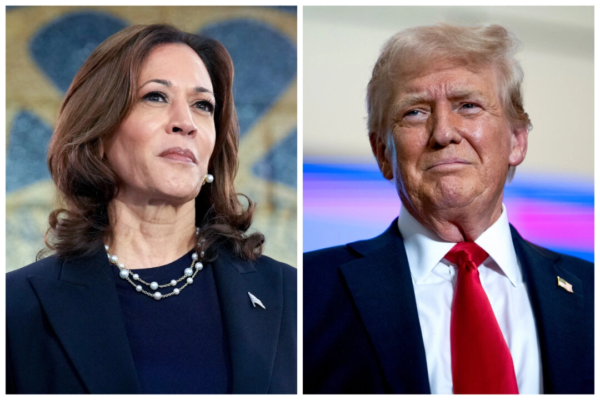On Friday, November 1st, former President Trump and his running mate, Hua Jinli, once again headed to Milwaukee, the largest electoral base in Wisconsin, for a campaign rally, aiming to secure votes in the county. The rally venues for both parties were less than 7 miles apart.
Both Trump and Hua consider Milwaukee County a battleground they must win, as the distribution of votes in the county is starkly divided: Milwaukee city is a stronghold for the Democratic Party in Wisconsin, while the surrounding suburbs are key support areas for the Republican Party. However, on the night of the showdown, Trump and Hua took different approaches, with Trump holding a rally in downtown Milwaukee, while Hua focused on campaigning in the suburbs.
Both Trump and Hua emphasized the intensity of this year’s election in Wisconsin. In the past six presidential elections, the margin of victory in Wisconsin was less than one percentage point or fewer than 23,000 votes only four times.
As of Friday, Trump had visited Wisconsin ten times, including his third visit to Milwaukee, while Hua had visited the state nine times, with her fifth visit to Milwaukee and the suburbs. This may be the last appearance for both candidates in Wisconsin before November 5th.
Brian Schimming, chairman of the Wisconsin Republican Party, noted that in this election, Hua had to return to the Democratic stronghold of Milwaukee, indicating a defensive strategy, while Trump was on the offensive.
Hilario Deleon, chair of the Milwaukee County Republican Party, mentioned that whether it’s Democratic voters in the city or Republican supporters in the suburbs, the votes in this county could decide the outcome of the statewide election in a tight race and potentially influence the overall direction of the election. He stated, “Both candidates realize that the path to the White House goes straight through Milwaukee County.”
For Trump, the situation in Wisconsin is crucial. In 2016, he won the state by a narrow margin, but in 2020, his support in the Milwaukee suburbs waned, coupled with an increase in Democratic votes in the city, leading to him ultimately losing the lead. This year, Trump is attempting to regain support in the suburbs.
On the Democratic side, Hua’s campaign team is aware that they must mobilize voters in Milwaukee as the county is home to the largest African American community in Wisconsin, potentially offsetting Trump’s support in the suburbs and rural areas. The team expressed hope to replicate and surpass Biden’s 79% vote share in 2020.
Prior to her visit to Milwaukee, Hua campaigned in Janesville, in southern Wisconsin, and expressed her support for labor unions during a speech at an international electricians’ union event.
In Milwaukee, the counting of mail-in ballots typically occurs in the early hours after Election Day.
Ben Wikler, chair of the Wisconsin Democratic Party, expressed confidence in Hua’s campaign activities in the state, suggesting that they could yield unexpected results. He said, “No one knows how these voters will cast their ballots. I think Hua may have some surprises in store.”

